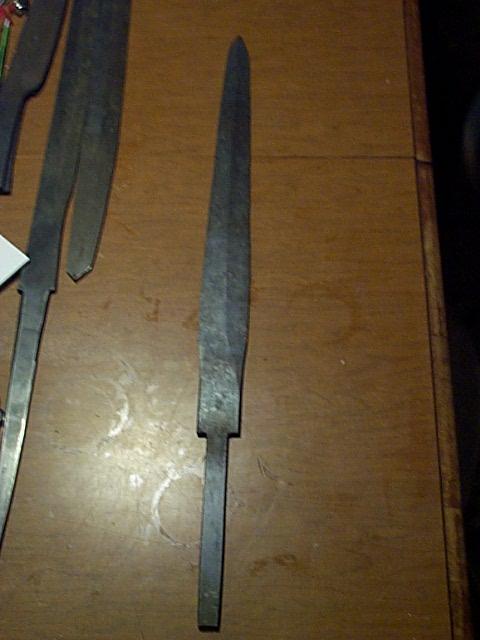
| myArmoury.com is now completely member-supported. Please contribute to our efforts with a donation. Your donations will go towards updating our site, modernizing it, and keeping it viable long-term.
Last 10 Donors: Graham Shearlaw, Anonymous, Daniel Sullivan, Chad Arnow, Jonathan Dean, M. Oroszlany, Sam Arwas, Barry C. Hutchins, Dan Kary, Oskar Gessler (View All Donors) |
| Author |
Message |
|
Joshua Milford
|
 Posted: Mon 30 Jul, 2007 2:42 am Post subject: Grinding Diamond Cross Sections Posted: Mon 30 Jul, 2007 2:42 am Post subject: Grinding Diamond Cross Sections |
 |
|
Hi all,
I've been racking my brains to try and come up with a way of grinding diamond cross sections onto blades in an easy fashion. :P
Is there a jig or a guide that can be constructed? Or am i going to be sitting on the belt sander for even longer? I don't neccessarily need the quickest way, just the one that yields the best result (A nice straight ridge down the middle)
All advice is appreciated.
Josh
|
|
   |
 |
Merv Cannon

|
 Posted: Mon 30 Jul, 2007 5:56 am Post subject: Diamond Cross-section Posted: Mon 30 Jul, 2007 5:56 am Post subject: Diamond Cross-section |
 |
|
Hi........I just asked my friend at training that same question and he does it by drawing a line down the center of the steel ( with a paint-pen ) and then uses an angle-grinder to work up to but not over the line. This eventually leaves a centeral ridge on both sides. He said that he gets better results using sanding discs on the grinder and not gringing-discs. When all sides are equal and hes happy, then he grinds away the ridges while keeping the same angle. I myself have not tried this yet but I pass it on...perhaps others have a better way ?
cheers
Merv ....... KOLR
http://www.lionrampant.com.au/
"Then let slip the dogs of war ! "......Woof !
|
|
   |
 |
|
Peter Lyon
Industry Professional
|
 Posted: Mon 30 Jul, 2007 11:53 am Post subject: Posted: Mon 30 Jul, 2007 11:53 am Post subject: |
 |
|
My method is to remove the bulk using a big grindstone (I have access to a 16" stone pushed by a 5HP grinder), use a sharp P36 belt to remove the resulting ridges and get the grind marks running along the blade length (grind marks across the blade increase the risk of stress cracks during heat treatment); heat treat at this point, remove any curves during the tempering stage ideally, but certainly before final grinding; then use the flat plate to remove any remaining undulations, going through P36, P120 (use new belts to minimise frictional heating) etc down to the finest belt you have, then final finish with scotchbrite, polishing etc.
This is a fair bit of work and uses several new belts in the process, but it produces really flat flats and looks very good, also, if your first edge grinds are to a line parallel with the edge and the second grinds return that to a central line, you automatically get distal taper and a pretty even flex along the blade that can be tweeked during final grinding to get the exact flexibility you want.
|
|
  |
 |
Sam Salvati

|
 Posted: Fri 03 Aug, 2007 11:07 am Post subject: Posted: Fri 03 Aug, 2007 11:07 am Post subject: |
 |
|
You could forge it in first, then use that preformed bevel and ridgeline as a guide on the sander, it was VERY easy to forge and grind this sword.
 Attachment: 36.38 KB Attachment: 36.38 KB

I've got a lust for life
|
|
   |
 |
|
|
You cannot post new topics in this forum
You cannot reply to topics in this forum
You cannot edit your posts in this forum
You cannot delete your posts in this forum
You cannot vote in polls in this forum
You cannot attach files in this forum
You can download files in this forum
|
All contents © Copyright 2003-2025 myArmoury.com — All rights reserved
Discussion forums powered by phpBB © The phpBB Group
Switch to the Basic Low-bandwidth Version of the forum
|

